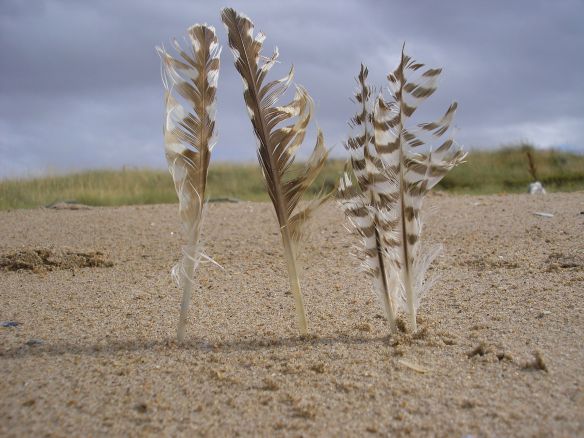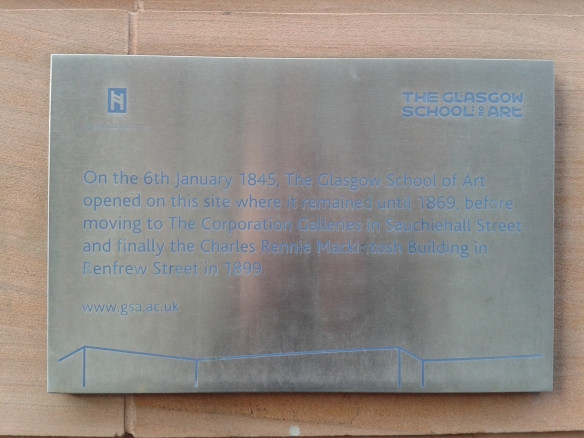Stark contrasts, perhaps naively, surprised me in Brussels.
I anticipated encountering the instruments of European governance amongst the European Quarter of Brussels. As such, I was not surprised to find myself wandering amongst the glistening buildings of the European parliament in Espace Léopold. The main elements, the Paul-Henri Spaak building and the Altiero Spinelli building, were constructed in the 1990’s on the site of an old brewery and railway yard.
 Already these public spaces have been supplemented with a wide range of artworks, interpretative and memorial signs. The majority of these evoke key moments of the European project: perhaps best well known is ‘Europe’, the Bronze statue of Europa carrying the symbol of the Euro overhead, by sculptor May Claerhout; a plaque to Solidarność (Solidarity); a vast neon heart to Václav Havel by artist Jiři David (which in 2002 was hung over Prague Castle); an arc of banners ‘Out of the Abyss‘ displaying key moments in the emergence of Europe; and many others…
Already these public spaces have been supplemented with a wide range of artworks, interpretative and memorial signs. The majority of these evoke key moments of the European project: perhaps best well known is ‘Europe’, the Bronze statue of Europa carrying the symbol of the Euro overhead, by sculptor May Claerhout; a plaque to Solidarność (Solidarity); a vast neon heart to Václav Havel by artist Jiři David (which in 2002 was hung over Prague Castle); an arc of banners ‘Out of the Abyss‘ displaying key moments in the emergence of Europe; and many others…
 Looking to the past, to look to the future, these works presence elements of a common European Heritage. The continued significance of the past to this ongoing project can be seen in the adjacent Parc Léopold: there is also, the little known, European Union time machine !
Looking to the past, to look to the future, these works presence elements of a common European Heritage. The continued significance of the past to this ongoing project can be seen in the adjacent Parc Léopold: there is also, the little known, European Union time machine !
Parc Léopold contains the 15th century Eggevoort Tower and also contains one of the last ponds in the Maalbeek Valley: the pre-city land form. The pond is fed by the Maalbeek river (in Dutch ‘The Mill Stream’) which flows through this part of the city. The park was established as the Royal Zoological Gardens in 1851, but was closed following an epidemic, and in 1880 was named Parc Léopold after the first two kings of the Belgian state. The park was subsequently the location for several large public buildings including The Solvay Library and The Pasteur Institute. Building works are taking place on another large public building in Parc Léopold, the Eastman Building, which is a former dental institute. It is currently being extended and converted it into The House of European History, within which ‘different viewpoints and diverse interpretations of history’ will be presented.
Such public works could be anticipated, but what surprised me more was the striking contrasts I found in close proximity to the glass and chrome of European Institutions:
Stencils on the boundary of Parc Léopold, beyond which The House of European History is being constructed within…

Abandoned buildings and stalled spaces…

The Space Invader…!
 What struck me most, however, was found on the other side of Parc Léopold. In the shadow of the Paul-Henri Spaak building (holding the debating chamber of the European parliament) and close to the 15th century Eggevoort Tower in Parc Léopold, there is a patch of ground.
What struck me most, however, was found on the other side of Parc Léopold. In the shadow of the Paul-Henri Spaak building (holding the debating chamber of the European parliament) and close to the 15th century Eggevoort Tower in Parc Léopold, there is a patch of ground.
 This once derelict ground, situated on Avenue du Maelbeek, has been the focus of local actions which are exploring the nature of relationships (social, political, environmental, historical) in this part of the city. This process started in November 2010 when Citymine(d) gathered delegates in the European Quarter to explore how, local action can engage with derelict urban spaces, using them as places of imagination and positive action.
This once derelict ground, situated on Avenue du Maelbeek, has been the focus of local actions which are exploring the nature of relationships (social, political, environmental, historical) in this part of the city. This process started in November 2010 when Citymine(d) gathered delegates in the European Quarter to explore how, local action can engage with derelict urban spaces, using them as places of imagination and positive action.
A collaborative mapping exercise, that explored the public space was facilitated by MAP-it, in which local residents, European civil servants, artists and neighbourhood groups participated and asked the question:
‘What can small and grass-roots initiatives do to tackle urban issues in the European Quarter?’

Extract from Small Initiatives in the European Quarter by MAP-it, PUM Collective and Thomas Laureyssens
Further details of this process can be found at the MAP-it website: where more information about MAP-it tools (which could be used in other participatory mapping exercises) can also be found.
From this participatory mapping process, emerged a collective response to the creative potential of Eggevoort Wasteland, known as the PUM Project: ‘Projet/participation Urbain/urgent Maalbeek’. The PUM Project engages creatively with the themes of water and the potential of urban space through a range of small art projects, many of which have an environmental and / or heritage theme, examples of which can be found here, falling under the banner:
‘Small initiatives in the European Quarter :: water, the city, the people and the Eggevoort Garden’
Further details about PUM Project can be found at the project website and can also be found in a downloadable booklet: Small Initiatives in the European Quarter. From MAP-it to PUM
‘By means of the MAP-it method PUM transforms the analysis of interacting powers and potential of urban spaces into creativity and collective action.’
and hence transforms Eggevoort Wasteland into Eggevoort Gardens.
 The short time I spent exploring the European Quarter of Brussels revealed an incredible richness of cultural activity, which was permeated with history and heritage, but in some ways ridden with tensions about the vision for this part of the city.
The short time I spent exploring the European Quarter of Brussels revealed an incredible richness of cultural activity, which was permeated with history and heritage, but in some ways ridden with tensions about the vision for this part of the city.
A wonderful reminder that cities, like all landscapes, are contested and dynamic….
and that we all can play a part in maintaining, imagining and creating sustainable cities of the future.
 What is the relationship between landscapes and creativity? Do some landscapes afford more creative potential? Do some landscape characters (e.g. upland, coastal, woodland) inspire and provoke greater creative responses? Do some landscapes have more components (material, emotional, spiritual, historical, ecological etc) and complexity which can be drawn upon? Is it the person, the intention, the practice brought to the landscape which catalyses creativity? Is it a complex relationship, a conversation, between a person and a landscape which co-produces? Does landscape based creativity capture a fleeting memory of the past, or a glimpse of possible futures? Is experiencing, dwelling within a landscape, always a creative process: an entanglement, a negotiation, an innate ability to express ourselves in a myriad of different ways?
What is the relationship between landscapes and creativity? Do some landscapes afford more creative potential? Do some landscape characters (e.g. upland, coastal, woodland) inspire and provoke greater creative responses? Do some landscapes have more components (material, emotional, spiritual, historical, ecological etc) and complexity which can be drawn upon? Is it the person, the intention, the practice brought to the landscape which catalyses creativity? Is it a complex relationship, a conversation, between a person and a landscape which co-produces? Does landscape based creativity capture a fleeting memory of the past, or a glimpse of possible futures? Is experiencing, dwelling within a landscape, always a creative process: an entanglement, a negotiation, an innate ability to express ourselves in a myriad of different ways?














